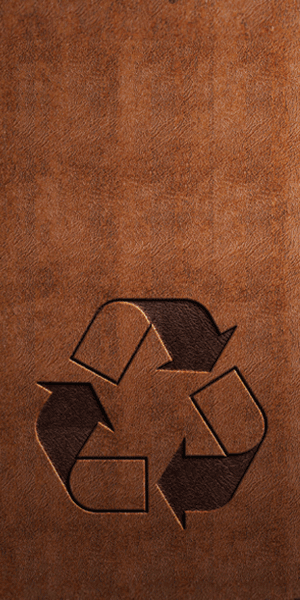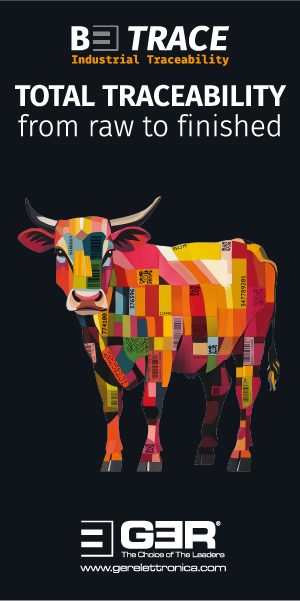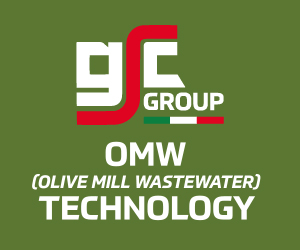Market Intelligence—21.12.21
Macroeconomics
The fast and rapid spread of the new covid-19 Omicron variant is dominating events, although there are many other things that are at least as significant for economic and political development in the world. Nevertheless, the old saying holds true: a healthy person has many wishes, but a sick person only one.
In the meantime, it has become generally accepted that vaccination is helpful and protective, but there are still too few scientific studies that can tell us how potentially dangerous the new variant could be. We can only hope that it will possibly lead to milder symptoms. Until then, almost all countries are tightening their protective measures again. We are refraining from complete closures as in the last waves, but public life will be considerably scaled down again. Of course, the upcoming Christmas holiday will play a major role in this. At least in the Christian world, it will hardly be possible to enforce a complete lockdown during the holidays.
Companies and politicians will have to deal with the possible consequences. On the one hand, there will possibly be new problems in the supply chain and, on the other hand, the spectre of inflation has now become a reality, even among the greatest doubters. This is slowly turning into a Gordian knot that will be very difficult to untangle.
For the time being, the dangers of inflation prevail and in the US the Federal Reserve reacted accordingly at its last meeting. However, a reduction in bond purchases and the announcement of several interest rate hikes in the coming year to fight inflation had already been widely expected. In Europe, these decisions continue to be difficult to take because the consideration of the decisive people in the European Central Bank for the national budgets in southern Europe weighs more heavily than the fight against rising prices.
At the moment, opinions on the further development in the coming year are still balanced. Experts, who are taking the matter seriously, do indeed expect the inflation rate to fall on its own, but the real threat lies more in the wage-price spiral, which could develop quickly from wage negotiations in the coming months.
Geopolitically, the situation is not getting any easier either. The smouldering conflict between East and West is intensifying almost daily. In addition to the growing uncertainties in Europe, the situation in the Pacific and between China and the US also remains very fragile.
The financial markets remain mostly unmoved by these political risks. The Federal Reserve’s decision to fight inflation slowly and gradually was largely expected, and after its release the markets showed little surprise. Share prices remained stable and continue to ignore potential political risks. Similarly, there is little pricing in of risks that may affect the supply chain. Likewise, there is little evidence that financial investors are assuming that the pandemic, assuming it ends or can be controlled at some point, will affect consumer behaviour in any way. Somehow one cannot get rid of the impression that overall it is still assumed that one day everything will somehow return to the way it used to be.
As already mentioned, the financial markets have moved relatively little in the past two weeks. The same applies in principle to commodity and currency prices. Crude oil traded very steadily around $75 per barrel, despite mixed news regarding supply and demand. The US dollar was able to profit moderately from the announcements of the interest rate hike in the US, but there were no significant fluctuations.
Even though gold is generally regarded as a safe haven to protect against inflation, the price has remained around the $1,800 mark. Overall, one has the impression that financial investors and the markets expect no significant movement before the end of the calendar year and will only deal with fundamental decisions again in the New Year.
Leather Pipeline
This issue will be the last of 2021 so it’s time for a bit of retrospection and, of course, a bit of foresight for next year.
In retrospect, it has to be said that a year ago we were all just waiting for the vaccines and assumed in principle that if they were available in sufficient quantities, the pandemic could be brought to an end during 2021. The big question was how quickly and how much of the vaccine would be available worldwide. It was less a question of if than a question of when.
Thus, despite the certainly more difficult situation a year ago, there was fundamentally more optimism than now. Of course, people have learned to deal with the pandemic and with the changes it imposes on our way of life, but somehow a clearly perceptible dullness has become established in many countries and among many people. People have learned to live with the restrictions and the circumstances, but somehow you can sense that many people have lost a little faith and hope in a return to what they once had and how they once lived.
This essentially concerns the freedom to travel anywhere at any time without having to think about whom they would meet and under what circumstances. Of course, it is not enough to assume that it will probably be possible to do this again sometime and somehow; that may still be a long way off. Even if, as we all hope, at the end of next year we might have made great strides forward, we believe that three years of the pandemic will have left many deep scars on many people. The confidence that humans can combat any possible threat very quickly and successfully has become dented.
The same can be said for the political situation, because who would have thought, just a short time ago, that military conflict involving the major powers could again become a real threat?
In the end everyone has to continue to shape their lives and face the challenges. This works best with a healthy dose of optimism and positive attitude. This is also especially true for our little microcosm, the leather pipeline.
If we look at the past 12 months, things developed parallel to the general sentiment over the year. In the first six months, confidence increased continuously, with China leading the way. Then the rest of the world came out of its state of shock and returned to the greatest possible normality. This meant that, despite all the problems in logistics, all supply chains made an effort to replenish stocks and plan the course of the year with positive expectations. This also led to a restocking in the leather industry and a significant increase in production and production planning.
As a consequence, prices for raw materials rose significantly in the first quarter, again with players in China displaying a clearly optimistic attitude. This slowly petered out and things calmed down again by the middle of the year. The previously optimistic attitude led to a reluctance among raw material suppliers in particular to notice problems and, above all, accept the consequences of prices that had risen too quickly and by too much. Their hope that the leather industry would to return to the market and pay the prices demanded, despite considerably increased production costs, logistics costs and energy costs, with simultaneously unstable supply chains and great uncertainties in the consumer business, delayed the necessary price correction.
Very high slaughter levels in the US and at times in South America, combined with growing disruption in car production, then led to a significant rethink in the third quarter. Prices began to fall, and it became clearer every day that the packer industry would find it difficult to sell the quantities of rawhide produced without stimulus from sectors other than automotive. The quantities that were no longer taken up by the automotive industry ultimately had to be placed elsewhere, and this could only be done with price reductions.
Fortunately, the season for furniture leather went well again. At the same time, the really big manufacturers of shoe leather and their customers, the big brands, were also prepared to continue feeding their production at a competitive price. This not only led to prices falling by over 40% in some cases compared to the summer, but also meant that large and financially strong volume buyers were able to choose from a wide range of special offers over time. Thus, the average commodity prices for most of the big players returned to positive levels relatively quickly. It should be remembered that leather prices are much less elastic; in many cases leather prices were aligned with 2019 levels rather than any 2020 distress sales.
We pointed out many times back in the summer that the price increases for many commodities had simply been pushed too far and we would have welcomed the sharp fluctuations to have been less pronounced. It would certainly have avoided a good deal of stress.
However, the good news at the end of this year is that we do not have the impression that the market is still plagued by excessive stocks at the moment. Until a few weeks ago, the rapid and strong price correction meant that there were no large unsold stocks worldwide. Some tanners who supply the automotive industry have had to pull the emergency brake here and there, but overall this led to price corrections, but not to a complete collapse of the markets.
The big question centres on where the path will lead us in the new year. As is often the case, there are two major conflicting areas interests. On the one hand, there are those who, after the sharp declines of the last few months, now see the moment when the opposite development should occur, even if the only argument they can present is that what goes down must go up. On the other hand, though, there are people who point out that current price levels offer a workable basis and that we should first stabilise this before plunging into new adventures.
The winter cycle for furniture leather will come to an end again at the end of the first quarter of 2022. This means that we may still see one or two flickers before then, but basically the second and third quarters will then be below average. Shoe leather is missing the renaissance of leather as a material. Consumption and use may be steady, but general levels of consumption and the use of leather as a material do not seriously suggest a significant increase in demand.
That leaves the wild card of automotive leather. There is a backlog. Many cars (there is talk of well over 10 million vehicles) have not been built in 2021 owing to missing components. Delivery times for many models are now a year or more, and even then only if the components become available again next year. Even if the public does not expect a normalisation in the supply chain until the second half of 2022, there is a very realistic chance that car production will increase significantly over the next two years. The only question then is whether this will correlate with demand for leather. Many in the slaughter industry believe that it will.
We are not so unreservedly optimistic. The parameters to consider are first of all how much stock of semi-finished and finished goods has been built up in the meantime. Tanners have not reduced their production to the same extent as their customers have reduced their demand. In addition, there is the question of whether the large backlog has built up more for the standard types of vehicle rather than those more likely to use leather. We do not yet share the fear that new vegan interiors will significantly affect the demand for leather. The alternative materials that are rapidly displacing leather are not yet available and, in our view, do not pose a substantial threat to the business in the next 12-24 months. What comes after that will certainly have to be reassessed.
Playing the prophet for the long term has rarely worked. Above all because we have not yet discussed the supply side. At least from today’s perspective, we can expect stronger seasonal fluctuations in the coming year, but overall meat production worldwide will not decrease significantly. Regionally, the figures may shift by a few percentage points, but we do not expect them to be of decisive importance in the overall balance in the coming year.
Based on this, there is good reason for a relatively narrow price range in the commodity market in the coming months. It is indisputable that this would be good for most market participants. Even though it rarely happens, we are not giving up hope that this time this will prevail.
The split market has been quite positive in recent weeks. Demand for both collagen and gelatine has been strong overall, and the constant search for cheap raw material has also supported the situation. Nevertheless, a general calming down owing to the upcoming holidays is not absent in this sector either.
Lamb and sheepskin remain a problem. The usual winter demand from China for the larger winter skins and their increased wool revenue was almost completely absent. In the southern hemisphere, the situation is somewhat better overall, because more of the dense and fine wool types that are currently in better demand are produced there.
Nevertheless, only those articles that are suitable for certain high-quality finished products continue to enjoy good demand in this sector. For the rest, a real recovery in demand for garment leather just won’t happen.
At the end of this year, we can only thank our loyal readers for their attention and hope to have been able to supply good information most of the time. It makes little sense to make any kind of forecast for the next few weeks owing to the holidays. We will start again at the beginning of the New Year. Until then, we wish all our readers and their families a Merry Christmas, a successful and healthy New Year in every respect.












